Best Long Range Cartridges

Long range shooting is one of the fastest-growing aspects of the gun world. There are more guns, scopes, and gadgets than ever before to help get impacts on target at extended ranges. The plethora of options creates its own challenges; how would someone know what to pick? This article endeavors to pick the best cartridges for long range pursuits.
Best Lists @ TFB:
- The Best Beginner AR-15
- The 5 Best Home Defense Shotguns
- Best AR-15 Charging Handles for 2025
- The Top 5 Best Rifles & Long Guns of 2024
- Best Optic for the AR-15
Terminology
We need to define some terms before we use them in this article. Feel free to skip this part if you already have these in your vocabulary.
“Ballistic Coefficient” is a critical measure of a projectile’s suitability for long range shooting. A higher BC is good, because it reflects a more aerodynamic design. Bullets that are long for caliber and sleek yield higher BCs, which in turn mean less wind deflection and drop.
BC can be measured in different ways. G1 is an older calculation method and is less accurate with modern bullet designs. G7 gives better results, but the same bullet will have a larger G1 BC than G7. Some companies prefer to post G1 numbers because it makes their products look more impressive to the uninformed. In any case, be sure to use the corresponding calculation system with the right BC. Putting a G7 coefficient into a G1 calculator won't create useful data!
“Long Range” means different things to different people. For this article, we will take general guidance from the way that highpower rifle competition breaks down distances. 500 to 600 yards is midrange, and long range matches have targets between 800 and 1,000 yards. Extreme long range (aka ELR) competitions usually start at 1,500 yards and move out from there.
These distances can be hard to visualize, particularly for sports shooters who only have access to 100 yard ranges. One good place to see these distances is on the freeway. A mile is 1,760 yards, so if the exit ramp is one mile out, you are looking at ELR shooting distances. Half a mile is 880 yards. A quarter mile (also seen at your local drag racing strip) is 440 yards. Freeway signs are not exact measurements and they do round the distances to give nice clean fractions, but this is an accessible way to visualize distances even if you do not have access to that kind of shooting range.
Most Versatile: .308 Winchester
We will start with the most versatile option, the venerable .308 Winchester. It's a cartridge that hits hard enough for hunting many big game species, but it's also relatively effective out to 1,000 yards. The keyword there is relative. There are a lot of ifs and buts around that statement. The .308 is not a hot rod cartridge. Oftentimes, its bullets have a moderate ballistic coefficient. It's not a 6mm hot rod used in PRS, nor is it a super overboard magnum used to keep bullets supersonic to 2,800 yards.
But what the .308 is, is well-rounded. And because it's available everywhere, and because it has been available in so many military and civilian contexts for so long, there are lots of competition opportunities to use a .308. Most competitions include a special class where .308 or .223 are the only caliber options. Now, whether or not .223 is an appropriate long-range cartridge is not something we're going to address today. That really comes down to how far away you consider long-range. But with the .308, you can shoot in FTR class if you like the F class game. You can shoot Palma if you like iron sights and have a long enough barrel to keep the bullet supersonic to 1,000 yards. You can shoot NRL Hunter, and you can shoot PRS tactical class. You can shoot it in service rifle competitions as well. That covers many of the most popular centerfire rifle competitions on the field today. And because the .308 is in its own or close to its own class, you'll be shooting against other shooters who are similarly handicapped ballistically.
Now, there are ways to get the most out of .308. Bullets like the Hornady 176-grain ATIP do that. But they cost a lot of money, and for most shooters, that additional ballistic juice is not worth the squeeze. Where the .308 shines is the fact that it can do everything fairly well and still be found on the shelf of an Ace Hardware, Walmart, or some random outfitter in the middle of nowhere when you’re on a hunting trip.
They are also very easy to source factory rifles for. I don't think there is a single rifle manufacturer today that does not offer a .308 Winchester in their lineup. Drop a comment below if you know of one, but I can't think of one.
The .308 was the traditional starter long range cartridge for many years. It still is recommended at times because it forces the shooter to work harder. A wind call error with the .308 is much more likely to result in a miss than the same error made with a 6GT. That will not help a shooter win the match that day, but it does help build skills by making the shooter work harder.
Best In An AR: 6mm ARC
Though the AR-15 is usually chambered in .223/5.56, there is an entire realm of cartridges designed to fit inside the dimensional confines of this gun that offer improved ballistics. Most readers will have heard of the 6.8 SPC or 6.5 Grendel. The 6mm Advanced Rifle Cartridge (ARC) is one of the latest to join that trend but it seems likely to outlast the competition.
Where the 6 ARC really outshines its predecessors is in ballistic coefficient. Because a 6mm bullet will be skinnier and longer than a 6.5mm bullet of equal weight, it will generally have a better BC. The 6mm ARC case is designed to accommodate those longer bullets while producing respectable velocities.
Hornady developed and introduced the cartridge and remains the primary manufacturer. Other manufacturers are starting to produce it as well. It's also very easy to load for, using standard 6mm bullets and common powders. It also broadly mimics the performance range of many niche cartridges used in precision rifle competitions, like 6mm PPC, 6mm BR, or 6mm XC, but in the AR platform. It also performs fairly well from shorter barrel lengths.
One of the only real hang-ups with the 6mm ARC has been magazine feeding (pun intended). Manufacturers have been working hard on this issue and there are now very reliable options. They may not be cheap (cough Geissele cough) but they work. There have also been some issues with bolt head failures because the bolt face is larger than a 5.56 round (meaning additional material was removed), but better bolt materials seem to have resolved this for the most part.
The 6mm ARC is a nicely balanced cartridge. Without too many downsides, it gets about as much long range performance as is physically possible from the confines of an AR-pattern gun. It also seems to have hit that critical level of popularity needed to make it a viable long-term option.
Best For Hunting: .300 Win Mag
Though a little long in the tooth, the .300 Winchester Magnum is a legend for a reason. It earned a reputation as an effective long range cartridge in competition and on the battlefield, but it finds the most use these days in the pursuit of big game. On both African plains game and larger North American animals like Elk the .300WM remains a popular option.
There will no doubt be someone running to the comments to decry a belted magnum being on this list. Yes, that is an antiquated headspace method, and there are very good reasons why headspacing on the shoulder is the method used by almost all other cartridges. Despite those issues the cartridge obviously works, and has worked for a long time. Newer options like 300 Norma or 300 PRC offer some advantages, but they cannot yet match the prevalence of the .300WM.
.300 Win Mag makes the list because it covers such a wide range possible uses. It uses common .308-diameter bullets across a very wide range of weights and common powders. It works for almost any hunting need except some African dangerous game (yes, you can shoot varmints with it if you don't mind recoil and ammo costs). It fits in a standard long-action receiver so there are many gun options on the market.
One of the major benefits of the .300 Win Mag as a cartridge is its prevalence. No matter where you go around North America or even the broader world, it is easy to find .300 Win Mag ammo. It is not a flash in the pan, nor is it the caliber of the month. And since most hunting happens in places away from major population centers it makes sense to opt for a cartridge you are likely to find everywhere rather than just specialty stores.
The Mk248 military load featured a 190-grain match bullet and H1000 powder, producing around 2,900 FPS. This has since been supplanted by the Mk248 Mod 1, with a 220-grain bullet at 2,650 FPS, but that specific loading requires a nonstandard chamber and faster twist rate. Commercial hunting loads come in a wide range of bullet types and weights, as do match options.
Best Big Bore: .338 Lapua
If a shooter wants something even bigger than the .30-caliber class of long range cartridges then the next stop is usually the .338 Lapua. Some may go bigger with a .375 Cheytac or Enabler or .416 Barrett, but it is hard to find both guns and ammunition for those options. The .338 Lapua is far more readily available though it also lags behind more common options like .300WM or 6.5 Creedmoor.
Some readers may have expected the .50 BMG to take this slot, and there are many reasons to put that forward as the best big-bore choice. It throws the heaviest bullet and has a legendary track record of use by snipers and militaries. In the civilian context, though, it is too much. The expense of ammunition, reloading components and equipment, suppressors, and firearms prices out a lot of shooters. Legal restrictions in some states and range rules in others limit its use. And the sheer size and weight of those systems make them hard to transport and use. If those hurdles are surmountable for you, then by all means get one and go enjoy it. But it is not something we can recommend as the best choice for most consumers.
.338 Lapua strikes a balance between availability and capability. Ammo may not be on the shelf of every pawn shop or hardware store but it can be found at many dedicated gun stores. Major manufacturers like S&B, Hornady, Winchester, and Federal offer factory load options. As of writing this piece in mid-2025, prices start around $3.25 per round. That is not cheap, but it is also not astronomical considering how much lead, brass, copper, and powder are used in each cartridge. Similarly, factory-made rifles are available without much searching. Savage, Christensen, Barrett, Steyr, Fierce, B&T, Weatherby, and Sako all offer guns chambered for .338 Lapua.
Common loads for the .338 Lapua push 250- to 300-grain bullets around 2,700 to 2,900 FPS. The trajectory is not any flatter than other cartridges, but energy retained downrange is significantly more impressive.
Best All-Around: 6.5 Creedmoor
Love it or hate it, everyone has opinions on the 6.5 Creedmoor. It was designed from the ground up to be an efficient, accurate cartridge, and it has delivered. Though it is a short action cartridge, it puts up drop and wind deflection numbers that used to be in the realm of big magnum cartridges.
But the Creedmoor does not produce nearly the same muzzle energy, and that's kind of the point. Most loads burn 40-some-odd grains of powder and launch a 140-ish grain bullet at 2700 FPS, give or take. That does not sound like blistering performance and it really isn't.
But the magic is in the case design. The 30-degree case shoulder and neck design are optimized for long, high-BC bullets. They don't leave the muzzle at exceptional speeds but they keep the speed they have much further downrange. This also plays into reduced wind deflection.
One of my first experiences with the Creedmoor was in a canyon where we used to shoot long range. It has about 1,100 yards of usable distance and was where I learned to shoot at extended distances with a .308 Winchester. Once the 6.5 Creedmoor hit the scene it was a game changer. The time-of-flight difference between those two cartridges was easy to see. The Creedmoor also hit harder and kicked up more splash because it retained more energy. But the downside of the cartridge was needing to find a new place to shoot, because the Creedmoor was too easy at those distances.
While the Creedmoor is an excellent target cartridge, it is a target cartridge. It is a great choice for hunting deer and similar species, but is on the light side for elk-size creatures. Hunters can and do use it for elk but shots must be chosen carefully, and there are more than a few stories of lost animals blamed on the “6.5 Needmoor.” If you're heading out on a once in a lifetime hunt for something big, take a larger cartridge to give yourself added insurance.
Best For Beginners: .22 LR
This one may come as a shocker. How can this humble rimfire cartridge, which many of us learned our initial gun safety lessons on, be a long range cartridge? It is a matter of scale. Shooting a .22 at 100 or 200 yards duplicates many of the effects that larger calibers experience at longer ranges. These small, light, slow bullets get pushed around by the wind and experience plenty of drop at common rifle range distances without needing a specialized long range facility.
Another huge benefit of practicing with a .22 LR is ammunition cost. There is no substitute in long range shooting for solid fundamentals and building repetitions with a rimfire is a cost effective way to work on those skills. Regular old CCI Standard Velocity is plenty accurate in most guns for practice use and does not break the bank. A shooter who can't fire a tight group with a rimfire will not magically get better at shooting when a larger cartridge is introduced so it makes sense to develop those skills in a cost-effective manner.
These rifles are also very affordable. Guns like the Bergara BMR, CZ 457, Savage Mark II, Ruger Precision Rimfire, and Tikka T1X are readily available and can be configured like a larger-caliber model for cross training. Depending on your interests, competitions like NRL22 or CMP Rimfire Sporter are venues for testing your skills against other shooters with these training rifles. Be warned, some competitors will be shooting guns that cost more than the average teenager's first car, but the less-expensive guns can still hold their own and are not likely to be the limiting factor.
Best Historical Option: .45-70
Are new cartridges too efficient for your liking? Do you love Vernier sights and wearing buckskin clothing? Does this history of the American West run deep in your veins? If so, there is an old-timey long range cartridge for you.
The .45-70 Government cartridge hails from a different century, but is the most prevalent cartridge from that era still in use. The .45-70 was famously used in the Trapdoor Springfield and soldiers on in guns like the Marlin lever action and modern Sharps rifle reproductions. Though other cartridges like the .50-70 (as used in Sharps carbines) or .45-110 (of ‘Quigley Down Under’ fame) may be more accurate historically, the .45-70 persists and is still common enough. Competitions opportunities like the annual Quigley Match in Montana offer an opportunity to shoot these old buffalo guns
This cartridge was designed for black powder use, but it works with modern smokeless propellants as well. Common loads these days push 300-400 grain bullets around 1800 FPS. Reduced "cowboy" loads typically use 400 grain lead bullets around 1300 FPS. Take care not to use modern, full-house ammo in older guns like the Springfield Trapdoor, as that can destroy the gun and possibly the shooter as well. Even with the hottest loads, expect a significant amount of drop compared to sleeker, faster bullets
Conclusion
There are dozens of other cartridge choices that could have fit on this list. Classic choices like the .30-06, .50 BMG, or 7mm Remington Magnum could all reasonably be among the best options. What is most important is being realistic about your use case and selecting an appropriate cartridge. What cartridges would you add to this list? Drop them in the comments below!

AKA @fromtheguncounter on Instagram. Gun nerd, reloader, attorney, and mediocre hunter.
More by Daniel Y












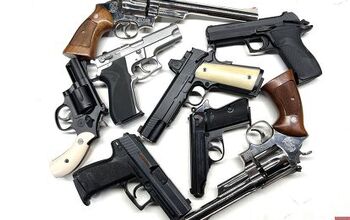
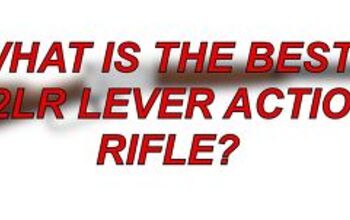









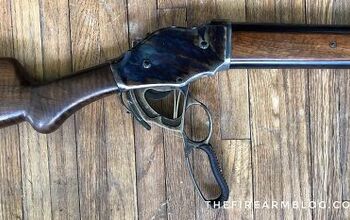


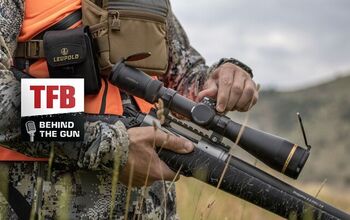
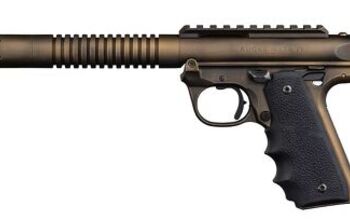


Comments
Join the conversation
Really? 6.5 Creedmoor as the best? Looks like somebody’s trying sell guns. I’ll take my 6.5 PRC all day over a Creedmoor. But that’s just my opinion.
7 PRC was never mentioned in the article. It's an excellent long-range cartridge for both target shooting (800 to 1500 yards) and hunting to 500 yards. Personally, I would have provided two separate categories for hunting and target plus a special notation for those that excel at both. In my experience, long range shooters are rarely, if ever, concerned about what ammo is available at the local hardware or outfitter. The article did a good job of covering the 22lr, which I shoot more than all other calibers combined. The 22 rifles mentioned are good, but the brands mentioned loose accuracy between 200 and 250 yards because of the 1:16 or slower, barrel twist rates. If you want to truly become accurate at distances of 300 yards and beyond, then a fast twist is the required for 22lr. Personally, I shoot a 12 twist MPA, as short as 100 yards, and all shots over 200 yards. I've been through several of the rifles mentioned, but they are not comparable at longer distances.
I'd say that's a pretty fair list. If a newer shooter or someone who doesn't shoot that much asked me to list the best cartridges to learn LR shooting with I wouldn't stray too much from this list. And probably would recommend 6.5 creed in a bolt gun for sure.
I agree 6mm arc is the best in an AR, but for newer shooters I'd maybe recommend the ol' 223. But that's my only possibly disagreement here.
I love that 45-70 is included because it was used super long range back in the black powder day. I'm not nearly a good enough shooter to push mine past 200 yards accurately though, and so I use a red dot on my Marlin!